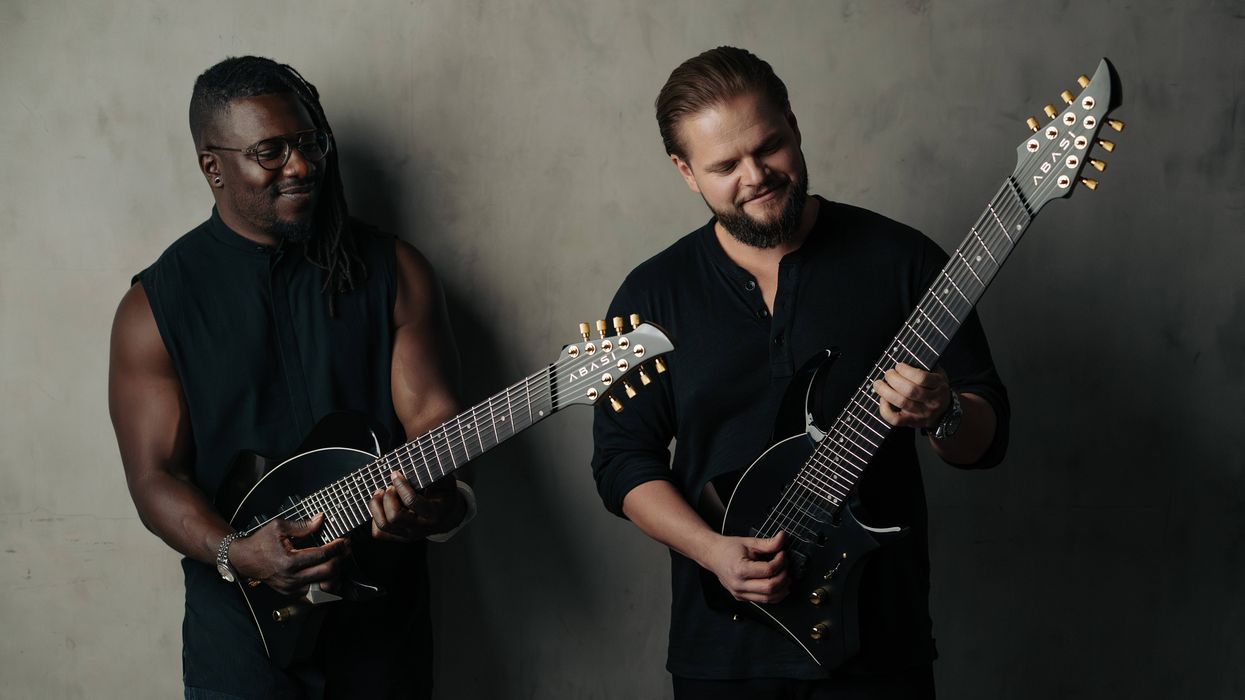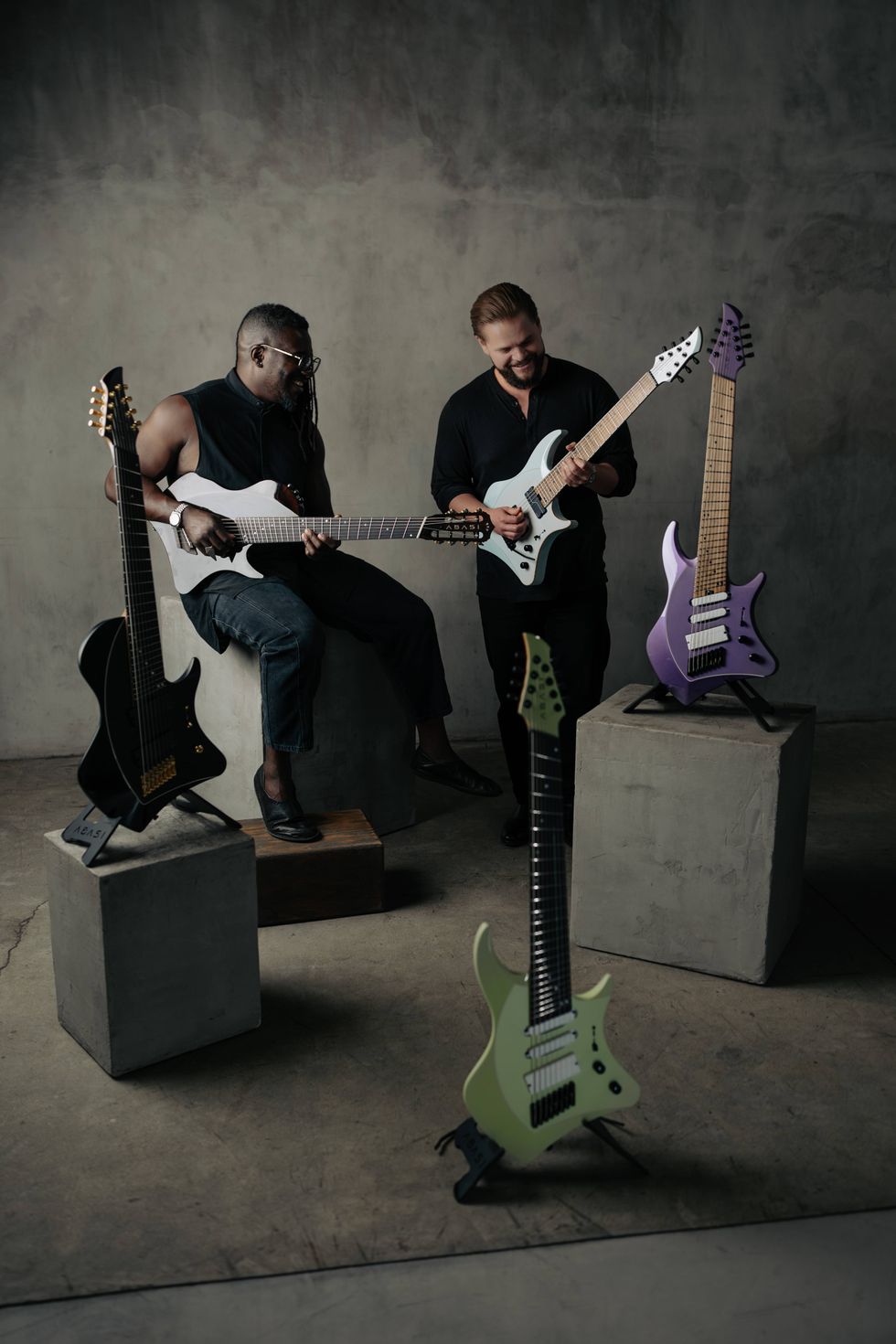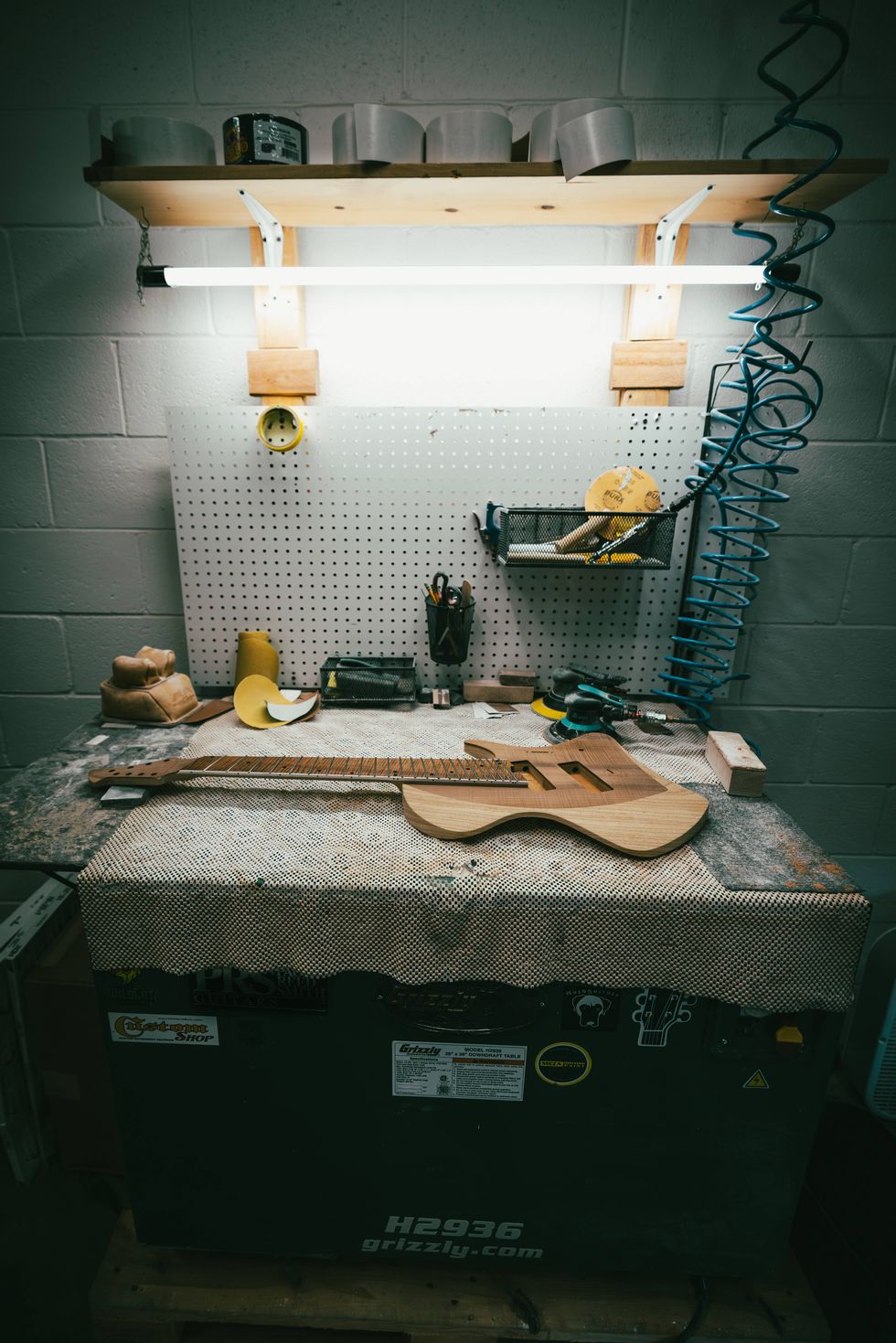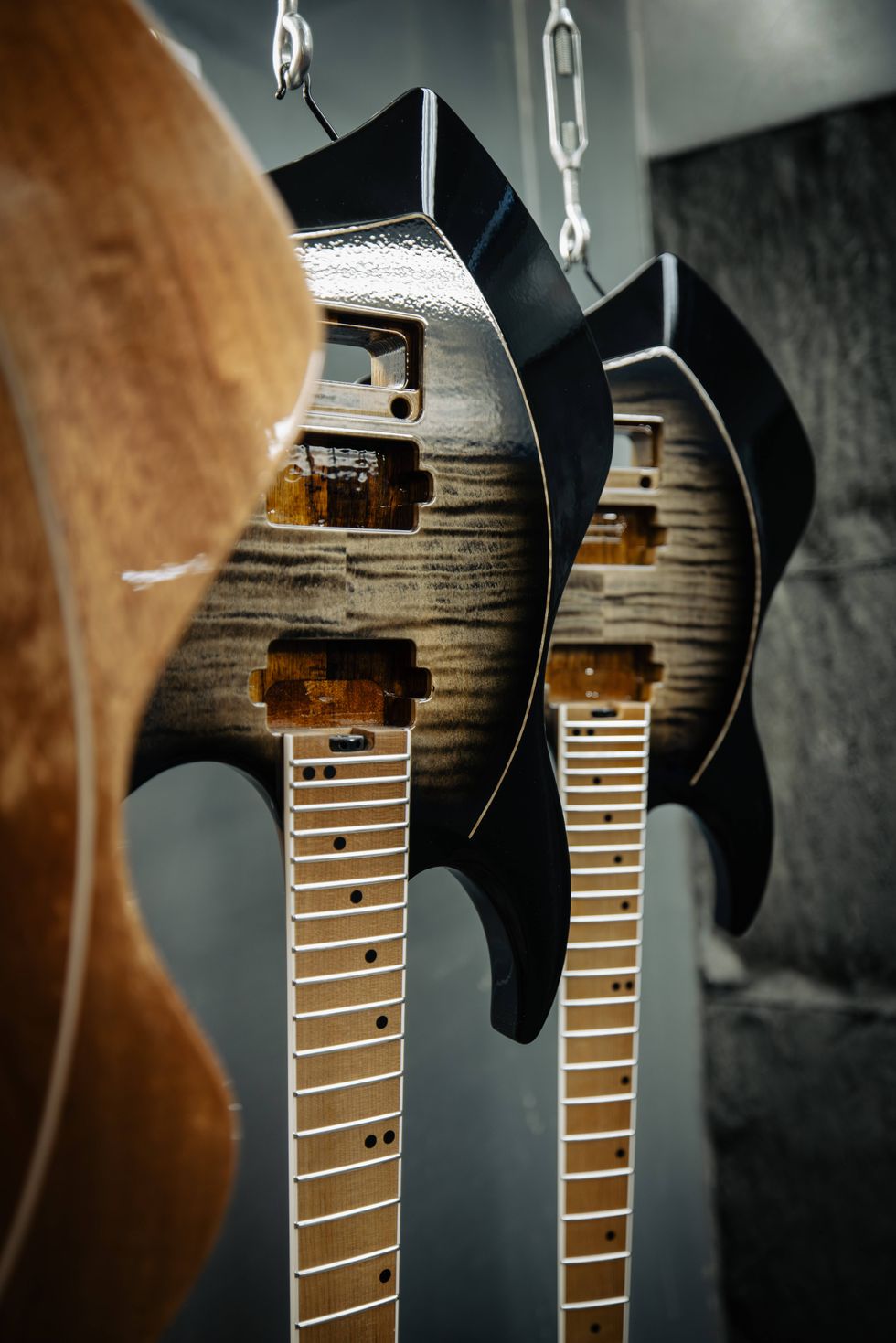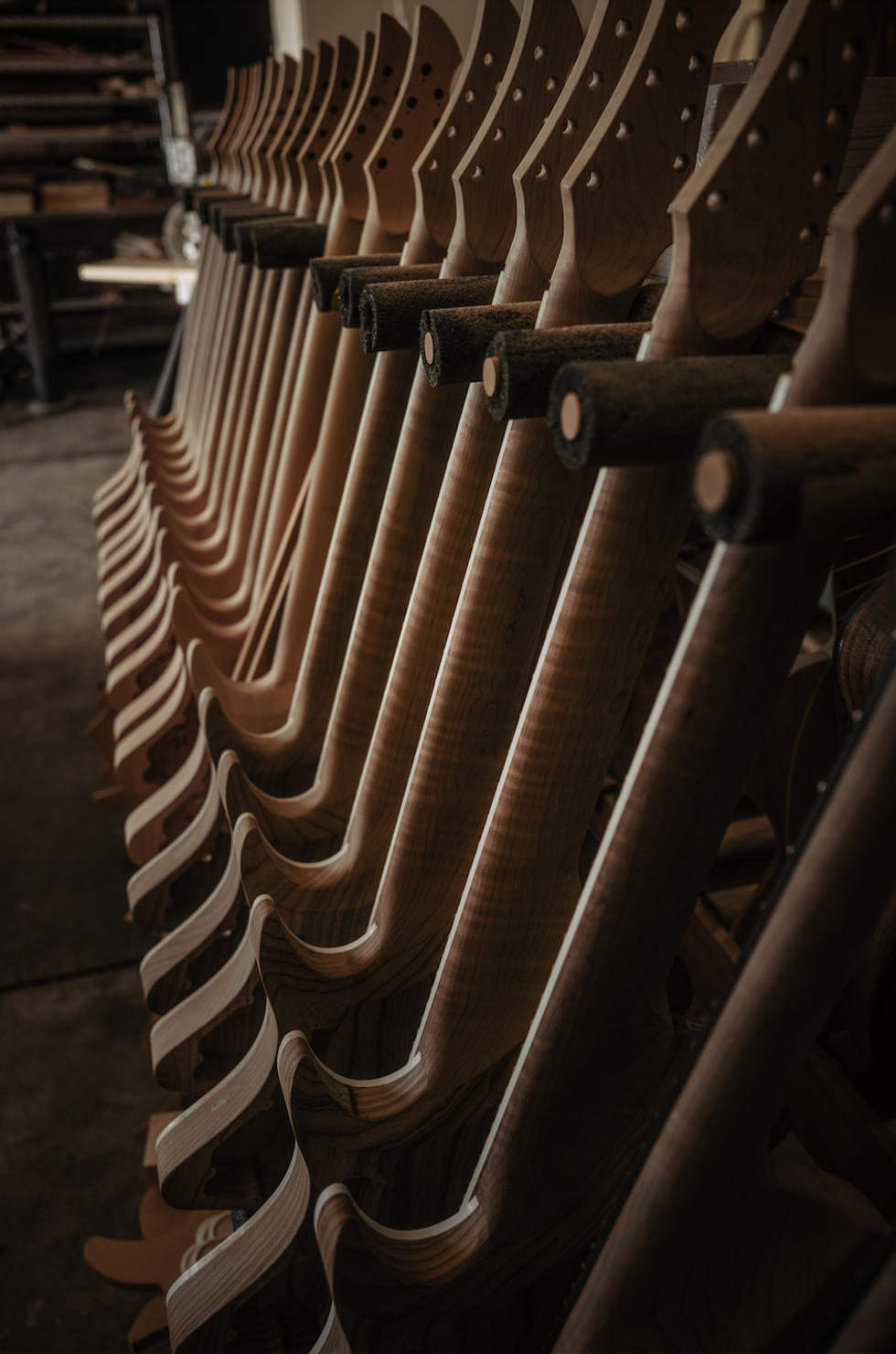While Kim Deal was making her new album, she was intrigued with the idea of failure. Deal found the work of Dutch artist Bas Jan Ader, who disappeared at sea in 1975 while attempting to sail by himself from the U.S. to England in a 13-foot sailboat. His boat was discovered wrecked off the southern coast of Ireland in April 1976, 10 months after Ader departed the Massachusetts coast. Ader’s wife took one of the last photos of him as he set off on the doomed journey from Chatham Harbor: Ader, wearing a blue tracksuit and a bright orange life jacket cinched around his neck, is beaming.
Deal isn’t smiling on the cover of Nobody Loves You More, her new album, but the art bears some similarities: Deal is floating on a platform in an expanse of gentle, dark blue waves, accompanied only by a few pastel-colored amps, her guitar, a stool, and a flamingo. It’s an unmistakably lonely image, but for Deal, failure doesn’t mean loneliness. It’s not even necessarily a bad thing.
“I mean, at least something magnificent was tried, you know?” says Deal. “At least there was something to fail. That’s an endearing thing. I think there’s a sweetness to seeing somebody get their ass kicked, because they were in it. It warms my heart to see that, just people getting out there. Maybe it gives me the courage and confidence to try something. It’s okay if I get my butt kicked. At least you’re trying something.”
“I think there’s a sweetness to seeing somebody get their fucking ass kicked, because they were fucking in it.”
Nobody Loves You More feels at least a little like Van Ader’s journey: an artistic project so long in the making and so precious to its creator that they’re willing to break from all conventions and face the abject terror of being judged by the world. That might seem like nothing new for Deal, who’s played music professionally for over 35 years, first with Pixies, then with the Breeders. But this LP marks her first proper solo album under her own name—a thought that mortified her for a long time. (“I like rock bands,” she says.) Even when she recorded and released what could be called “solo” music, she released it under a pseudonym. Initially, it was to be Tammy and the Amps. “I still was so uncomfortable, so I created Tammy and the Amps,” explains Deal. “I’m Tammy, who are my band? It’s the amplifiers downstairs in my basement. But the Tammy thing sort of got on my nerves so I just dropped it, so it was called the Amps.” She also assembled a band around that concept and released Pacer under the Amps’ name in 1995.

The cover art for Nobody Loves You More echoes the doomed last voyage of Dutch artist Bas Jan Ader.
This new record hums with the soft-loud energetic alchemy that defines much of Deal’s previous works. The opening title track is a slow, romantic strummer with string arrangements, while “Coast” is faintly ska-indebted with horns and a ragged Blondie chord progression. “Crystal Breath” gets weirder, with distorted drums, synthy bass, and a detuned, spidery guitar lead. “Disobedience” and “Big Ben Beat” continue the darker and heavier trajectories with fuzzy stompers interspersed with ambient, affective interlude tracks like “Bats in the Afternoon Sky.” It’s a patient, sensitive, and unmistakably scrappy record.
Some of the songs on Nobody Loves You More are as up-close and personal as solo records get. One in particular that’s drawn attention is “Are You Mine?,” a sleepy-eyed, lullaby ballad. At first listen, it could be taken for a love song. (In fact, Deal encourages this interpretation.) But it’s a song about her mother, for whom Deal cared in her home while she died from Alzheimer’s. The song title comes from a gut-wrenching moment.
“I was in the house, she doesn’t know my name,” explains Deal. “She’s still walking, she can form words, but she doesn’t know what a daughter is or anything. She passes me in the hallway, stops, grabs my arm and says, ‘Are you mine?’ She doesn’t know my name, she doesn’t know who I am, but there was a connection. I knew she was asking if I was her baby. I said, ‘Yeah, mama, I’m yours.’ I’m sure five seconds later, she forgot that conversation even happened. It was just a flicker, but it was so sweet. To have her not see me in so long, and then for one brief second, be recognized in some capacity…. She was such a sweet lady.”
Deal’s mother wasn’t the only loss that went into this collection of songs. Her father passed, too, after a prolonged illness. “My dad was this big bravado sort of personality and watching them get extinguished a little bit every day… I don’t know,” she says. “They both died at home. I’m very proud of that.” But writing “Are You Mine?” wasn’t painful for Deal; she says it was a comforting experience writing the gentle arpeggio on her Candelas nylon-string acoustic.
Deal assembled the bulk of Nobody Loves You More in her Dayton, Ohio, basement, recording with Pro Tools and a particularly pleasing Electrodyne microphone preamp. (Some of the songs date back more than a decade—versions of “Are You Mine?” and “Wish I Was” were initially recorded in 2011 and released as part of a series of 7" singles.) Deal recorded a good part of the record’s drums, bass, and guitar from home, but other contributions came in fits and spurts over the years, from old faces and new. Her Breeders bandmates, including Mando Lopez, Jim MacPherson, Britt Walford, and sister Kelley Deal, all pitched in, as did Fay Milton and Ayse Hassan from British post-punk band Savages, and the Raconteurs’ Jack Lawrence.

Kim Deal cared for her parents in their Dayton, Ohio, home until their passing, an experience that colors the music on her new solo record.
Photo by Steve Gullick
Kim Deal's Gear
Guitars
- '90s Fender Stratocaster
- '70s goldtop Gibson Les Paul
- Candelas nylon-string acoustic
Amps
- Marshall JCM900
- 4x12 cabinet
- Kalamazoo combo
Strings & Picks
- .011-gauge strings
- Dunlop Tortex Standard .60 mm
One day, ex-Red Hot Chili Peppers guitarist Josh Klinghoffer stopped by the studio to see what Deal was working on. He listened to “Wish I Was,” and scrambled together a lead idea. Deal kept the part and expanded it over time, leading to Klinghoffer’s writing credit on the record.
Deal used her trademark red ’90s Fender Stratocaster HSS along with a ’70s goldtop Gibson Les Paul for most of the electric work, pumped through either her long-time Marshall JCM900 or a tiny vintage Kalamazoo combo. Deal has never been a gearhead—at one point on our video call, she uses a tooth flosser as a pick to demonstrate some parts on her Candelas. “Kelley is a pedal person,” she says. “I’m not doing leads. I’m just doing a rhythm that needs to sound good.”
“I don’t think I’m taking it very well still, actually, or I’m a sociopath because I don’t even talk about [Steve Albini] in the past tense.”Over the years, Deal’s sonic thumbprint has been tied up in the work of her good friend and frequent collaborator Steve Albini, the producer, engineer, and musician who died unexpectedly in May 2024. (Deal quips, “Steve’s the lead character in my own life.”) Albini and Deal began working together in 1988, on Pixies’ debut LP Surfer Rosa. Their friendship continued over decades—Deal even performed at Albini’s wedding in Hawaii, for which he gifted her a ukulele—and the final sessions for Nobody Loves You More were under Albini’s watch. His parting hasn’t been easy.
“I got a text: ‘Call me,’” remembers Deal. It was a mutual friend, telling Deal that Albini had passed. “He told me and I just said, ‘You’re absolutely wrong. That didn’t happen.’ I don’t think I’m taking it very well still, actually. I don’t even talk about him in the past tense. I say, ‘What he likes to do is this.’ I never think, ‘What Steve used to like to do.’ My head never goes there. I wanted to record a song that wasn’t working and I said, ‘I need to do it from top to bottom at Albini’s.’ That’s not going to happen.”
YouTube
Along with Rob Bochnik and Spencer Tweedy, Kim Deal plays two tracks from Nobody Loves You More for a holiday fundraiser in November 2024 in Chicago.


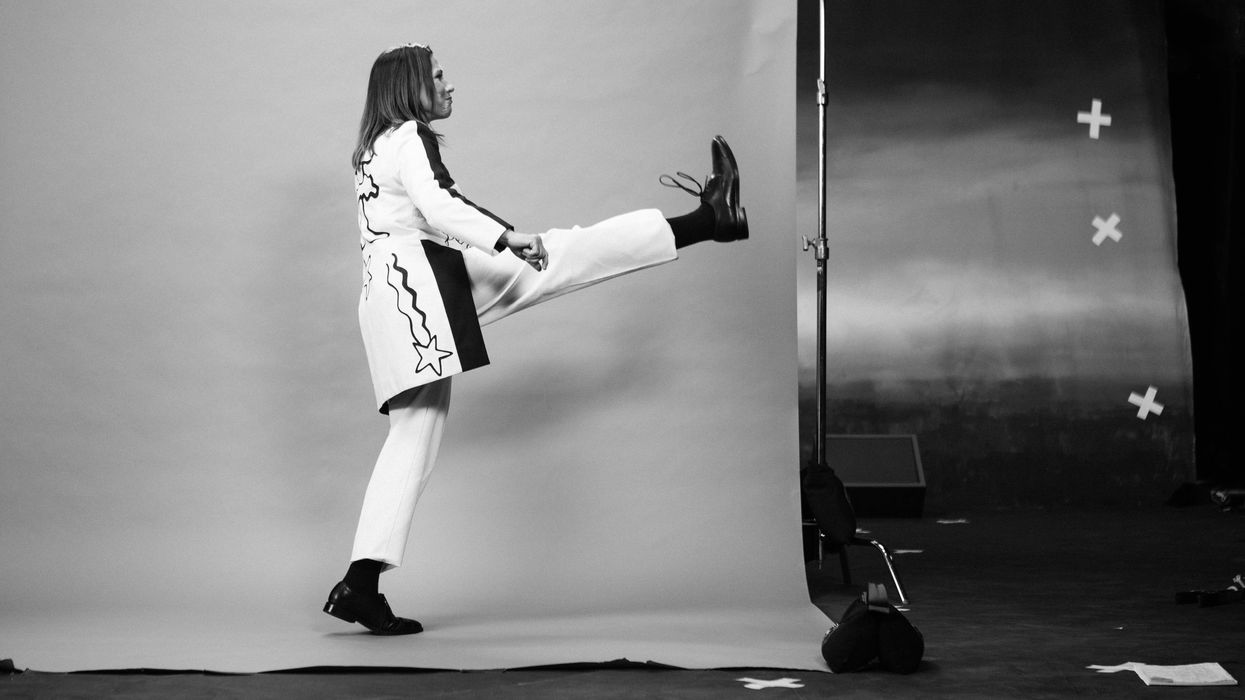

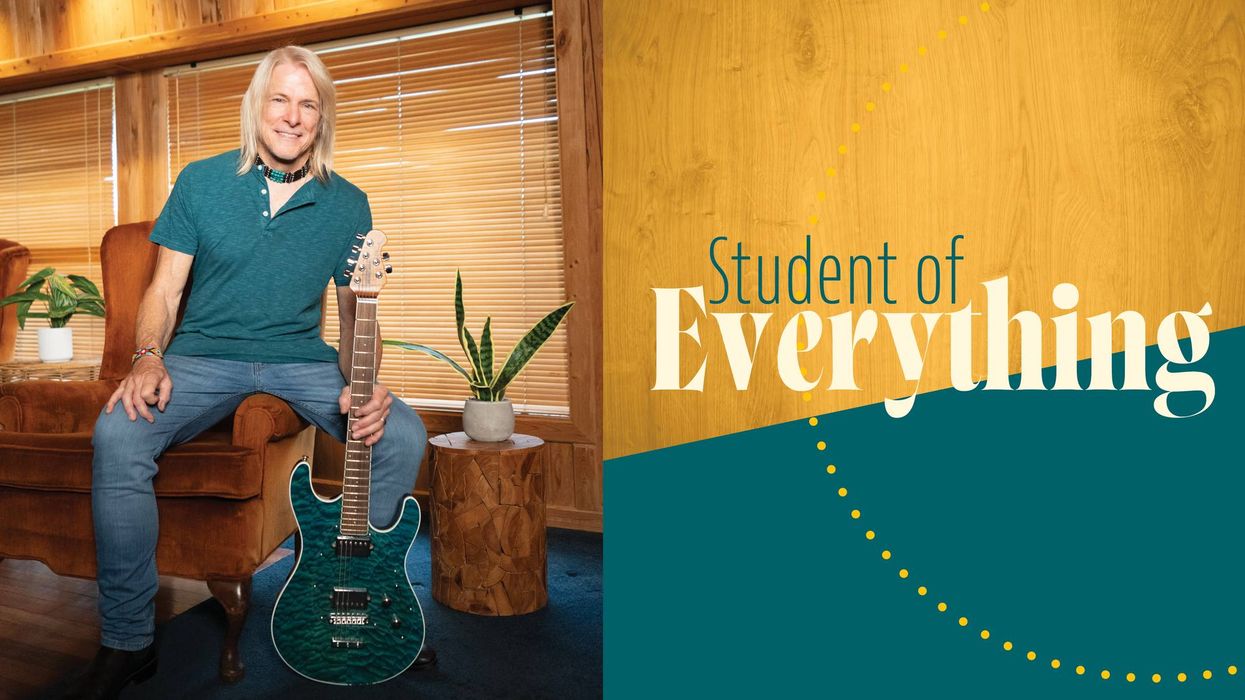
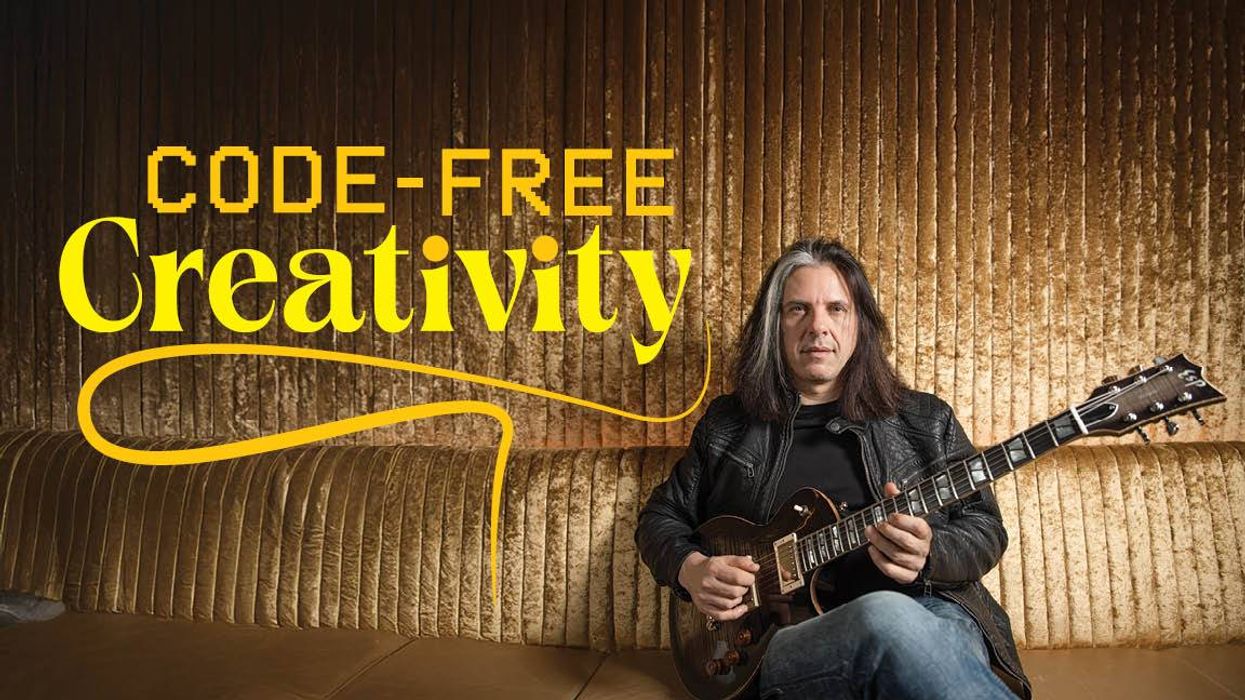

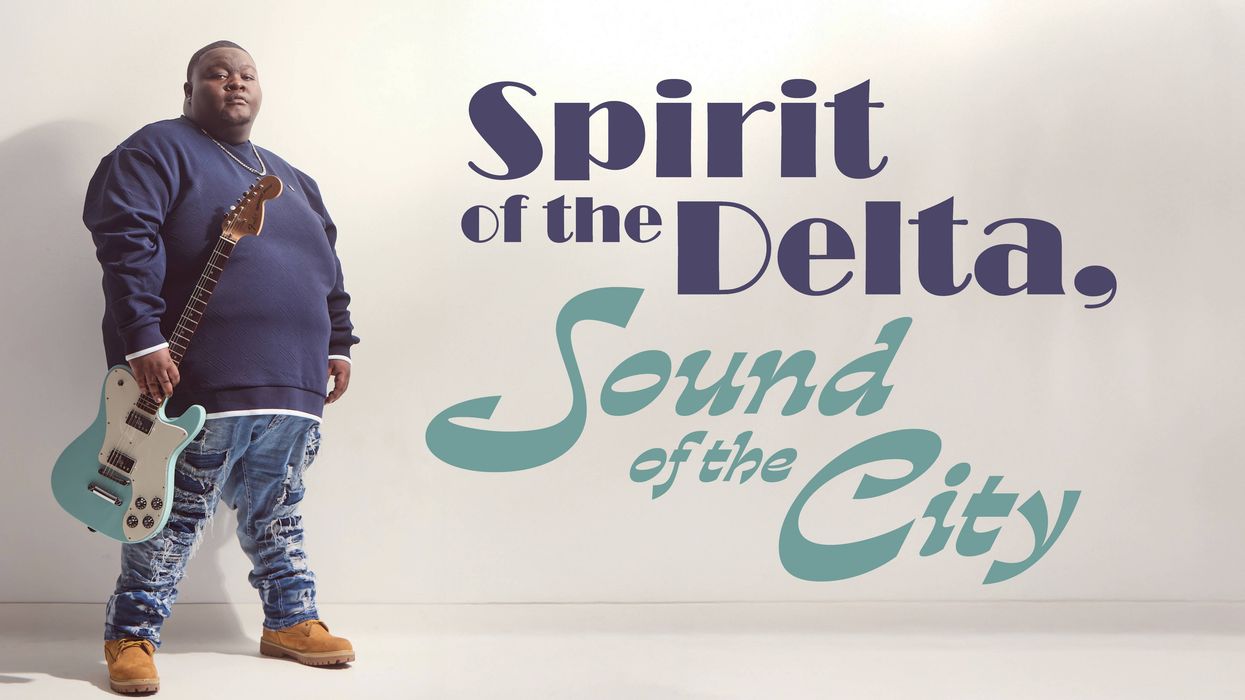
![Rig Rundown: Russian Circles’ Mike Sullivan [2025]](https://www.premierguitar.com/media-library/youtube.jpg?id=62303631&width=1245&height=700&quality=70&coordinates=0%2C0%2C0%2C0)












